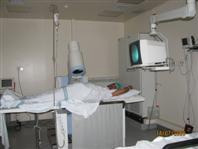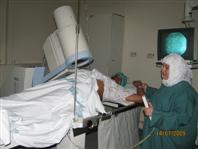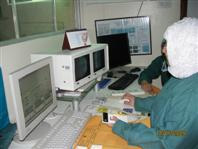
Extracorpreal Shock Wave Lithotripsy (ESWL)
Description

SMC offers Extracorporeals Shock wave Lithotripsy (ESWL) for the treatment of kidney stones as an alternative to surgery.
Surgical removal of kidney stones can be a painful and traumatic experience often requiring hospitalization. Lithotripsy may result in reduced complications, hospital stays, costs and recovery time. In some cases, Lithotripsy may be done on an outpatient basis.The Lithotripsy therapy system generates low energy shock wave impulses, which focuses on the kidney stone causing it to break into tiny pieces which can be passed naturally from the urinary system.
Procedure

Lithotripsy is a technique used to break up stones that form in the kidney, bladder,
ureters, or gallbladder. There are several ways of doing this, although the most
common is ESWL. High concentrations of X-Rays or ultrasound are directed from a
machine outside the body to the stones inside. The shock waves break the stone into
tiny pieces, which are passed out of the body.
Throughout the procedure, the Radiographer/Radiologic Technologist or the doctor
can view what is happening to the stones via an X-Ray monitor.
This operation is being currently performed by radiographers under the supervision of the Urology team. The average number of patients is five patients/day.
Precautions

The procedure is NOT performed during pregnancy.
Patients are usually asked not to drink or eat anything for 6 hours prior to the procedure, or after midnight of the previous night, if the procedure is in the morning. If the patient takes regular medicines, he/she should ask his/her doctor if they are safe to take before the procedure.
On the day of the procedure, the patient should wear comfortable clothes that are easy to remove, as he/she will change into a surgical gown. The procedure generally takes from 45 minutes to 1 hour. In most cases, he/she will be asked to lie on a table on top of a soft cushion, through which the shock waves are directed from the Lithotripsy machine, called the Lithotripter.
When the procedure begins, the patient will feel a light tapping sensation. Since Lithotripsy can cause mild discomfort, a mild sedative or painkiller is given beforehand.
While most kidney stones are treated with this type of Lithotripsy, not all stones can be treated this way. Patient will need to have routine blood and urine tests, abdomen X-rays and possibly an electrocardiogram before the procedure. X-Rays will help the doctor to determine if other treatment options or other treatments combined with Lithotripsy are preferable because of the size, location and/or number of stones. The patient's urine may also be tested to exclude an infection, which will have to be treated prior to Lithotripsy.
Location
There is 1 room located at the Day-Case Unit - SMC Old Building - Ground Floor.
Tel. No.: 17285544
Ext. No. : 5544
Equipment
One Lithostar unit and it is manufactured by Siemens.
The old ESWL unit was manufactured by Phillips (Dornier).
Available Staff
7 Radiographers:
- Mrs. Dunya Dawood
- Mrs. Wafa Al.Roomi
- Mrs. Najat Ali
- Mrs. Amira Hassan
- Mrs. Eman Al.Qassab
- Miss. Alya'a Al.Durazi
-
Mrs. Amal Abdulla
Timing
Sunday to Thursday from 7:00 AM to 2:00 PM


